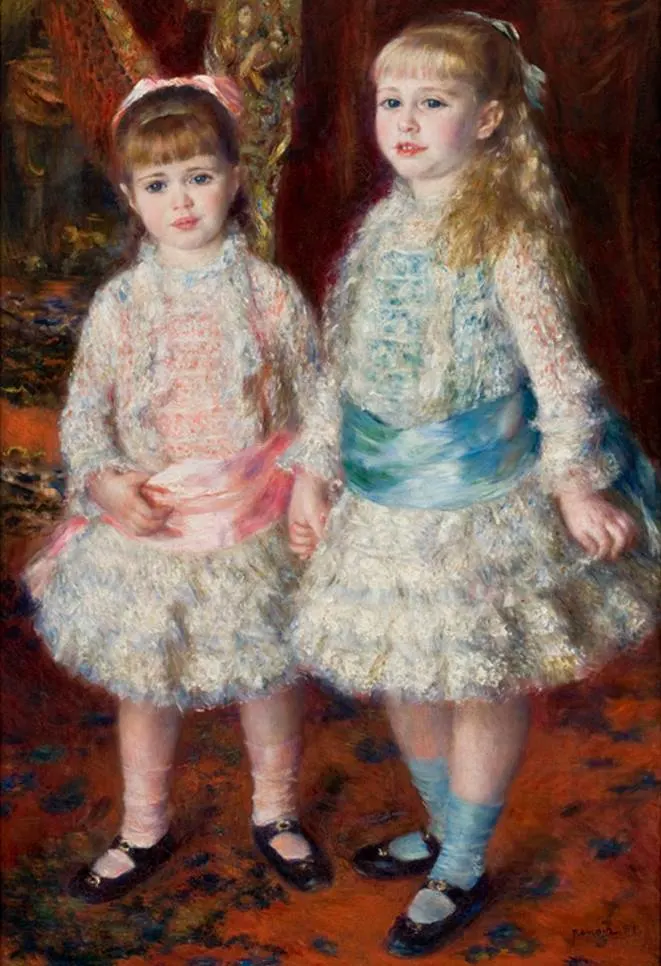One of the greatest museums in South America is housed in a building that has become a symbol of the city of São Paulo in Brazil.
The São Paulo Museum of Art or “Museu de Arte de São Paulo” (MASP) was established in 1947 by the powerful media magnate Assis Chateaubriand (1892-1968).
The owner of Diários Associados, an association of media companies, had the vision of establishing a museum dedicated to masterpieces that could rival the biggest art galleries in the world.
He founded a non-profit organization and gradually grew an art collection that is considered to be one of the greatest collections of European art in the Southern Hemisphere.
The current building was completed in 1968 and features a distinctive Brutalist architectural style. The main building is supported by two immense beams that reach a height of 74 meters (243 feet).
The museum houses over 8,000 items and in this article, you’ll discover some of the most famous paintings at the São Paulo Museum of Art.
1. The Resurrection of Christ – Raphael
- Date created: 1499-1502
- Dimensions: 56.5 x 47 centimeters (22.2 x 18.5 inches)
The Resurrection of Christ is a painting by Raphael that was completed when the Renaissance artist was still a teenager. This means that its one of the earliest works known by the artist. It was part of the first commission he earned referred to as the Baronci altarpiece.
Unfortunately, this work was seriously damaged by an earthquake in 1789 and only fragments of it remain, including this relatively small painting. The work was acquired by the São Paulo Museum of Art in 1954 and it remains the only painting by the Italian master in the Southern Hemisphere today.
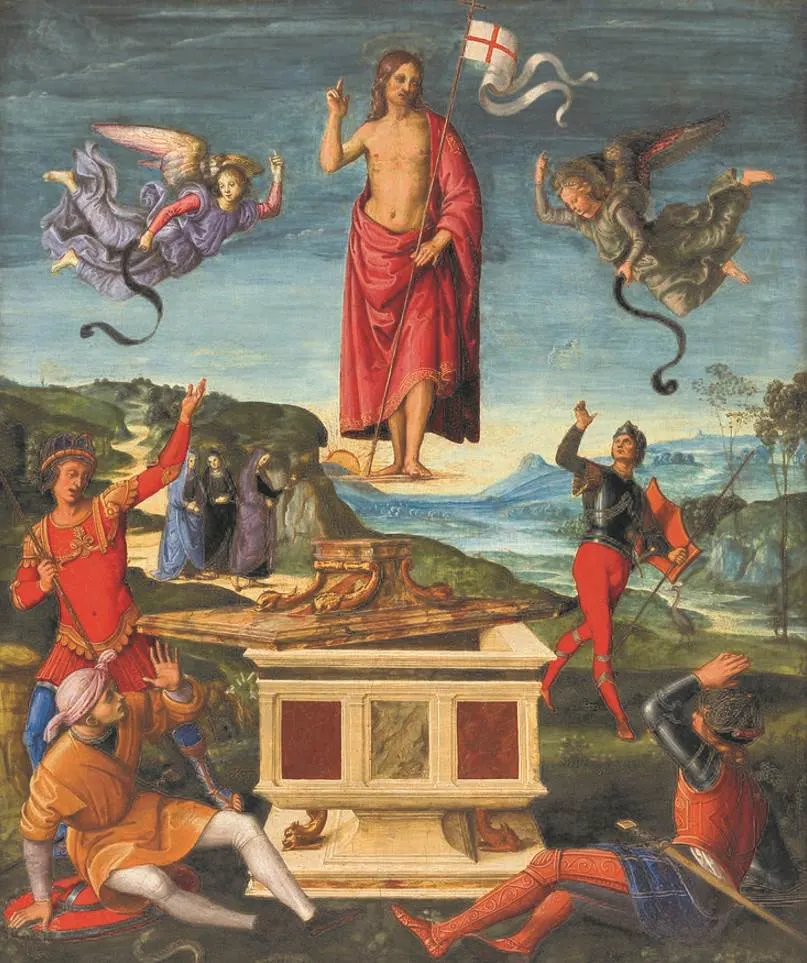
2. Virgin and Child with the Infant St. John the Baptist – Sandro Botticelli
- Date created: 1490s
- Dimensions: 74 centimeters (29 inches) in diameter
Virgin and Child with the Infant St. John the Baptist is another renaissance painting by an Italian artist, Sandro Botticelli. This artist produced some of the most famous Renaissance paintings in history, including the Primavera and The Birth of Venus during the 1480s.

This painting is a tondo that features a common subject during the Renaissance, the Virgin Mary together with her infant Jesus Christ. Like in many other paintings, they are accompanied by the young Saint John the Baptist who watches as Mary gently caresses her child.
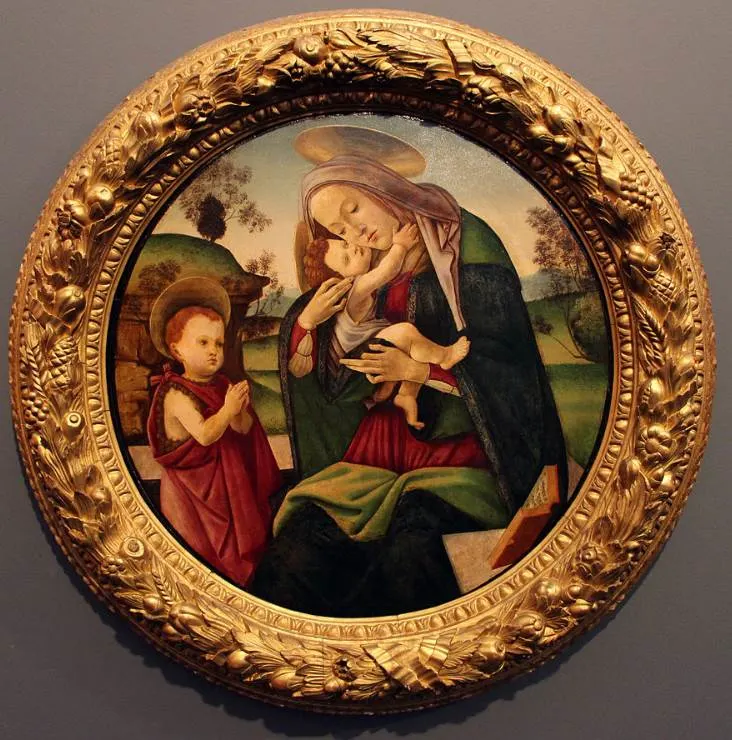
3. Diana’s Bath – François Clouet
- Date created: 1559-1560
- Dimensions: 78 x 110 centimeters (30.7 x 43.3 inches)
Diana’s Bath is a painting by French artist François Clouet (1510-1572), a man who produced some of the most important portraits of the 16th century. King Charles IX of France and Mary, Queen of the Scots, were some of his models during this period in history.
This painting is one of many Venus paintings that are referred to as the Roman goddess Diana. The nude figures in combination with the dark background of the natural setting make this a remarkable painting in the collection of the São Paulo Museum of Art.

4. Boating on the River Epte – Claude Monet
- Date created: 1890
- Dimensions: 133 × 145 centimeters (52.3 × 57 inches)
Boating on the River Epte is a painting by Monet and one of a series of paintings by the artist that depicts scenes from the Rive Espe. It was completed in the late 1880s and early 1890s, the decade that he moved with his family to Giverny, the place he lived and worked during the final decades of his life.
Claude Monet (1840-1926) used the sisters Suzanne and Blanche Hoschedé as models in this series. They were the daughters of Ernest Hoschedé, a rich banker and major patron of Monet. The Impressionist artist later married their mother Alice, which means they became Monet’s stepdaughters.
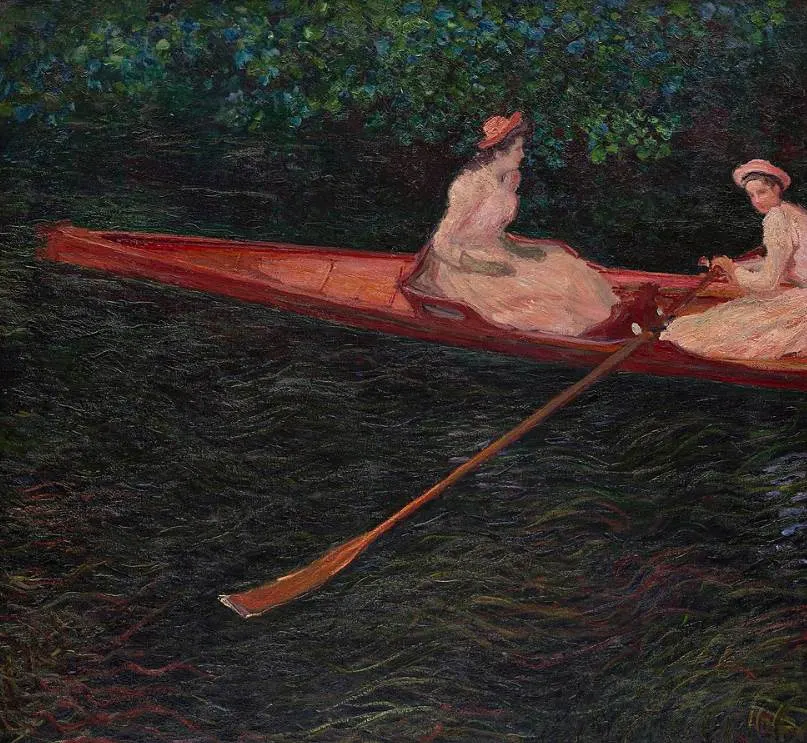
5. Pietà – Tintoretto
- Date created: 1560-1565
- Dimensions: 95 x 140 centimeters (37.4 x 55.1 inches)
Pietà is also known as Lamentation over the Dead Christ and is a painting by Tintoretto, one of the three great Venetian masters of the 16th century. It depicts a common subject during the Renaissance which is Mary mourning over her son’s dead body.
It’s not the only version that the Mannerist artist made of this subject because another Pietà is part of the collection of the Pinacoteca di Brera in Milan. The distinctive style of Tintoretto which highlights the dramatic effect with bold brushstrokes is clear in this Mannerist painting.
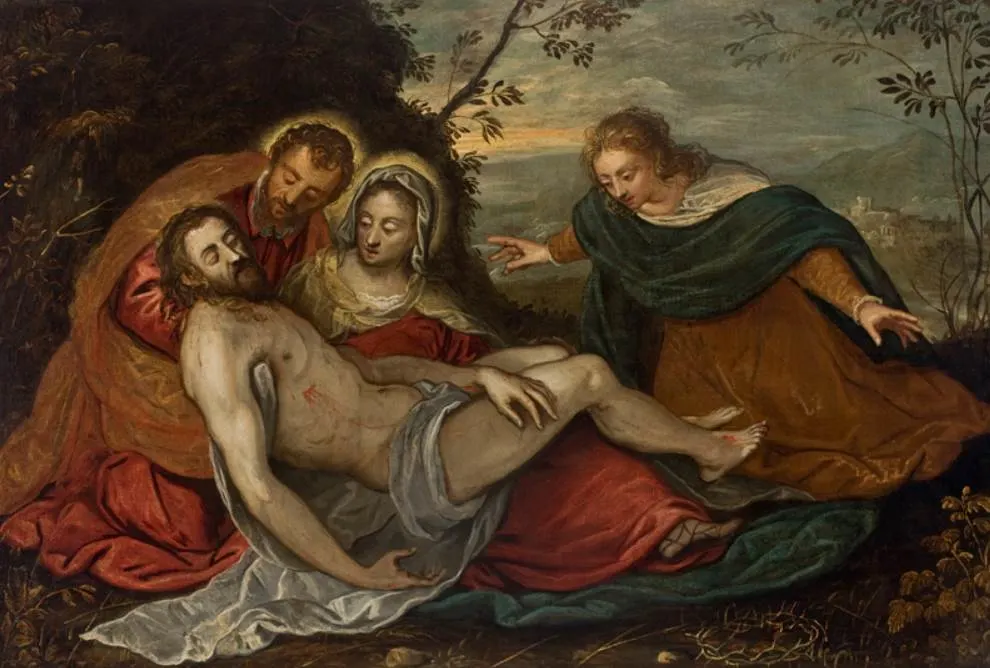
6. Portrait of the Count-Duke of Olivares – Diego Velázquez
- Date created: 1624
- Dimensions: 202 × 105.5 centimeters (80 x 41.5 inches)
The Portrait of the Count-Duke of Olivares is a painting by Velázquez, the Spanish artist who spent most of his career working at the court of King Philip IV of Spain and Portugal. It depicts Gaspar de Guzmán y Pimentel, Count-Duke of Olivares (1587-1645), a Spanish politician and nobleman.
It’s unclear when the artist of the Baroque era completed this work but we do know that he collected his payment on December 4, 1624. This means that this work was completed shortly after Diego Velázquez (1599-1660) became the court painter of Spain and a few years after he had first traveled to Madrid from his native Seville.

7. Portrait of a Young Man with a Golden Chain – Rembrandt van Rijn
- Date created: 1635
- Dimensions: 57 × 44 centimeters (22 × 17 inches)
Portrait of a Young Man with a Golden Chain is a painting by Rembrandt that was long thought to be one of the dozens of self-portraits by the Dutch artist. Although the authenticity of the fact that it was by the hand of Rembrandt van Rijn (1606-1669), it doesn’t appear to depict the artist himself.
Contemporary records have refuted the notion that it’s a self-portrait so the identity of the sitter remains unknown. Upon closer inspection, there is indeed little resemblance between this young man and the self-portraits produced by Rembrandt around the same time in the mid-1630s.

8. Salisbury Cathedral from the Bishop’s Grounds – John Constable
- Date created: 1821
- Dimensions: 90 x 114.3 centimeters (35.4 x 45 inches)
Salisbury Cathedral from the Bishop’s Grounds is a painting by John Constable, the renowned Engish artist who was one of the leading landscape painters of the Romantic era. Although many of his most famous paintings depict the region in Suffolk called Dedham Vale, this one doesn’t.
He completed several versions depicting Salisbury Cathedral as a commission from one of his friends, John Fisher, The Bishop of Salisbury. The wonderful painting in the collection of the São Paulo Museum of Art in Brazil is a slightly smaller oil sketch of the final version. This main painting is part of the collection of the Victoria & Albert Museum in London.

9. Portrait of Suzanne Bloch – Pablo Picasso
- Date created: 1904
- Dimensions: 65 × 54 centimeters (25.6 × 21.3 inches)
The Portrait of Suzanne Bloch is a painting by Picasso that was completed in the early 20th century, a time when the world-famous Spanish artist was still an aspiring painter. The difficult circumstances in which he lived while trying to find an artistic breakthrough are reflected in the gloomy paintings he produced during these few years.
This period is known as Pablo Picasso’s Blue Period and it was completed at the end of this phase. It depicts the singer Suzanne Bloch who was the sister of famous violinist Henri Bloch. This work was completed after the woman sat for the Spanish artist at the Bateau-Lavoir studio in Montmartre, Paris.
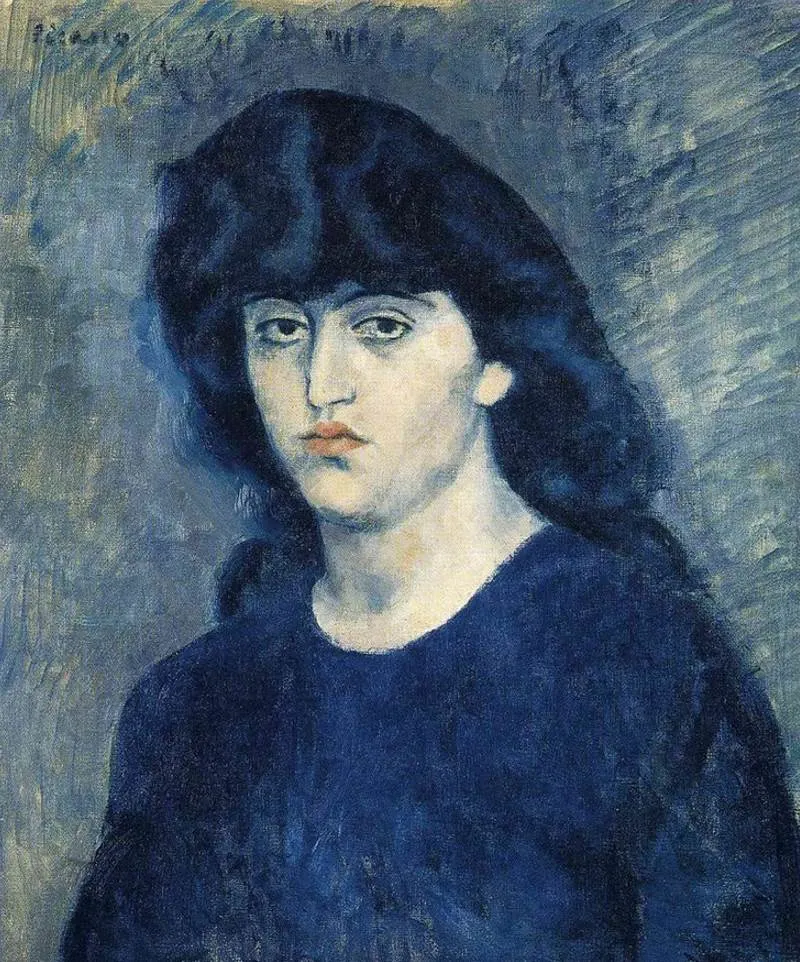
10. Pink and Blue – Pierre-Auguste Renoir
- Date created: 1881
- Dimensions: 119 × 74 centimeters (47 x 29 inches)
Pink and Blue is a painting by Pierre-Auguste Renoir, the French Impressionist painter who was one of the leading figures of the Impressionist art movement. It depicts the adorable daughters of Louise Cahen d’Anvers and her husband Louis Raphaël Cahen d’Anvers, a rich Jewish banker.
It’s not hard to understand why this work is considered to be one of the most popular paintings at the São Paulo Museum of Art. It depicts the young girls Elisabeth, born in December 1874, and Alice, born in February 1876, when they were 6 and 5 years old respectively.
Alice lived a happy life and died peacefully at the age of 89 in 1965. Elisabeth had a tragic life with 2 divorces and a life that abruptly ended on the way to Auschwitz in 1944 at the age of 69.
